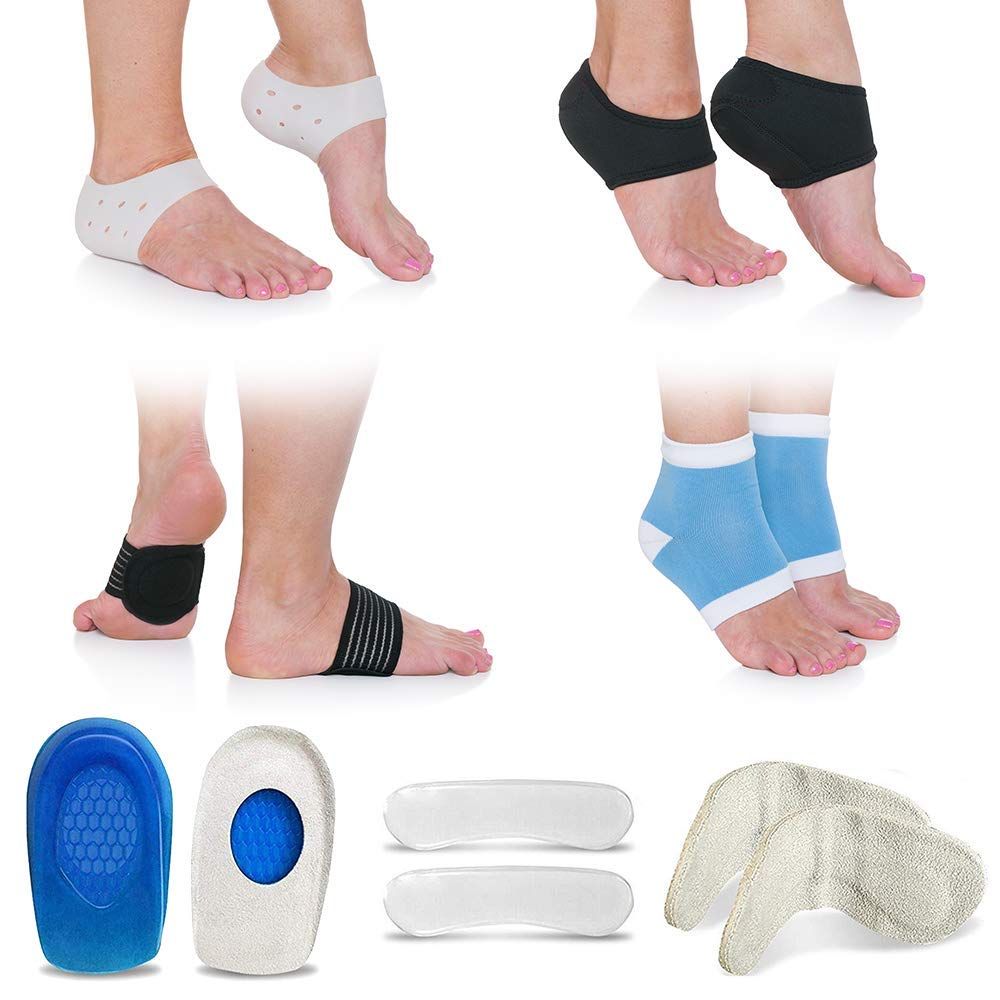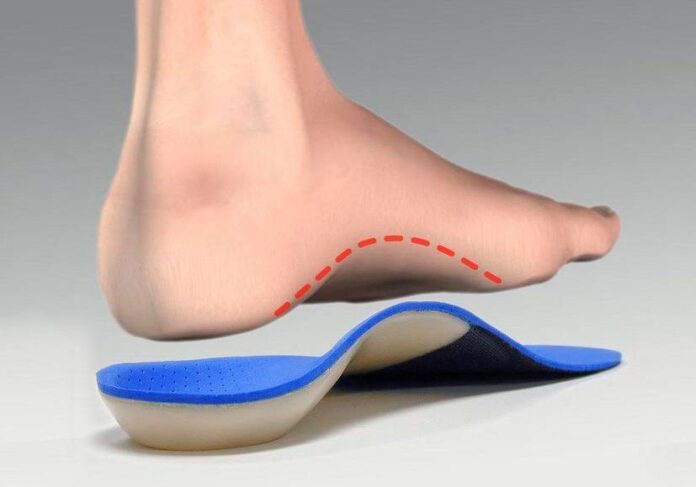If you suffer from plantar fasciitis, you know how uncomfortable and debilitating it can be. You may have heard about the importance of heel support for managing this condition, but what does it involve? In this blog post, we’ll get to the bottom of the different types of heel support available for plantar fasciitis so that you can make an informed decision about which option is best for you. Read on to get the scoop on heel support for plantar fasciitis!
Wearing Heels For Plantar Fasciitis Can Help Relieve Pain
Heel support can be highly beneficial for those suffering from plantar fasciitis. Heels can help distribute your weight evenly and support the plantar fascia, the thick band of tissue located in the sole of the foot. By wearing the right type of heels for plantar fasciitis, you can help reduce pressure on the plantar fascia and alleviate pain associated with plantar fasciitis. Additionally, heel support can help reduce swelling and inflammation and improve mobility.
A variety of heel supports available can be worn with shoes. These include orthotic devices, arch supports, heel cups, and wedges. Heel cups and wedges are designed to support the entire foot arch and can provide additional cushioning for those suffering from plantar fasciitis. They are typically made from soft materials, such as foam or gel, to ensure maximum comfort. Orthotic devices and arch supports are designed to stabilize and support the foot’s arch and provide better alignment.
When choosing a heel-support for plantar fasciitis, it’s essential to find one that is comfortable and supportive. You should also ensure that it fits properly and does not cause discomfort when walking or standing. Additionally, it’s essential to consult with your doctor or podiatrist if you have any questions or concerns about the best heel support for your feet.
They Can Also Help Prevent Injury.
Heel-support for plantar fasciitis can help prevent further injury to the area. The extra cushioning provided by these supports can reduce the stress placed on the plantar fascia and surrounding tissue. It reduces the risk of aggravating existing injuries and helps protect against developing new ones. Wearing heel support also reduces inflammation in the area, which helps to speed up the healing process. Additionally, wearing heel support can help relieve heel pain by providing a more supportive surface for your feet to land on. Heel support can help to ensure that your feet are properly supported during activities such as walking or running. Ensuring that your feet are correctly supported can reduce the chance of developing plantar fasciitis and other painful foot conditions. If you already have plantar fasciitis, heel support can be especially beneficial. Not only does it help provide comfort and reduce inflammation, but it can also improve your gait so that you don’t worsen the condition with every step. Choosing the right type of heel support is essential based on your individual needs. Speak with your doctor to make sure you get the right size, material, and type of support needed to address your particular condition.
What Causes Plantar Fasciitis?
A frequent condition that affects the bottom of the foot and causes pain and discomfort is plantar fasciitis. It’s caused by the overuse of the plantar fascia, a band of tissue that runs from your heel to your toes. When this tissue becomes inflamed, it can cause severe pain in your heel and arch.
The most common cause of plantar fasciitis is repetitive strain, such as running or walking long distances. Other causes include:
- Obesity.
- Being flat-footed or having high arches.
- Tight calf muscles.
- Unbalanced stride.
- Wearing shoes with inadequate support.
- Standing for long periods on hard surfaces.
It’s crucial to receive a proper diagnosis to receive the appropriate care. Common treatments for plantar fasciitis include rest, ice, physical therapy, stretching exercises, anti-inflammatory medications, and wearing heel support or orthotics. Heel supports provide arch and heel support that helps reduce the stress on the plantar fascia, decreasing pain and allowing for proper healing.
Choose The Right Type Of Heel Support.
When selecting a heel-support for plantar fasciitis, it is crucial to find the right type for your needs. A supportive shoe with a cushioned sole and arch support will help reduce the pain of plantar fasciitis. Heel cups, shoe inserts, and orthotic inserts are all options to provide relief from the pain associated with plantar fasciitis.
 Heel cups are a common form of heel-support for plantar fasciitis. These inserts fit inside the heel of your shoe, providing a cushion and support for the heel area. They are designed to help reduce inflammation and pain in the heel.
Heel cups are a common form of heel-support for plantar fasciitis. These inserts fit inside the heel of your shoe, providing a cushion and support for the heel area. They are designed to help reduce inflammation and pain in the heel.
Shoe inserts are another option when looking for heel-support for plantar fasciitis. These inserts are placed in the shoe’s sole to provide extra cushioning and support. They are often made of foam or gel materials and come in various sizes and shapes to fit different types of feet.
Orthotic inserts are a more specialized form of heel-support for plantar fasciitis. These inserts are custom-made for each patient based on their specific foot shape and size.
When choosing the right type of heel-support for plantar fasciitis, you must consult your doctor or physical therapist. They can recommend the best support for your specific situation and ensure it fits correctly in your shoes. With the correct type of heel support, you can experience relief from the pain associated with plantar fasciitis and return to normal activities.
Follow Instructions For Wearing And Using The Best Support For Plantar Fasciitis.
If you suffer from plantar fasciitis, wearing the best support for plantar fasciitis can be incredibly helpful in relieving your pain and preventing further injury. However, you must take the time to properly follow instructions for using and wearing the right type of heel support.
First, ensure you are using the right support for your specific condition. Different types of heel supports are designed to help with varying levels of plantar fasciitis. Talk to your doctor or healthcare provider to determine the best support for your condition.
Once you have the right type of support, make sure you use it correctly. Before putting on your shoe, always put the heel support first. Make sure the support is positioned correctly to provide the best support for your foot. Be sure to adjust the tightness of the straps so that they are snug but not too tight. It will ensure that you get the most benefit from the support.
When you wear your shoes with the heel support in place, make sure you wear them correctly. You want to ensure that your feet are properly aligned and that your weight is evenly distributed across your foot. Also, make sure that your toes have room to move and flex. It will help prevent any discomfort or injury due to improper use of the heel support.
Finally, regularly check your heel support for signs of wear and tear. Replace it if necessary, as the material can deteriorate over time. It is also essential to regularly check for proper positioning so that the support provides maximum benefit for your foot and plantar fasciitis.
By following these instructions and taking the time to use and wear your heel-support for plantar fasciitis properly, you can be sure that you are getting the best benefit possible from this treatment.
Conclusion
Heel-support for plantar fasciitis can be a great way to help relieve pain and prevent injury. It is essential to understand what causes the condition and choose the right type of support that is suitable for your needs.
Related Websites:
Articles on Blogshunt
Articles on Blogseu
Articles on Blogspeoples
Articles on Thebigblogtheory
Articles on Allcityforums
